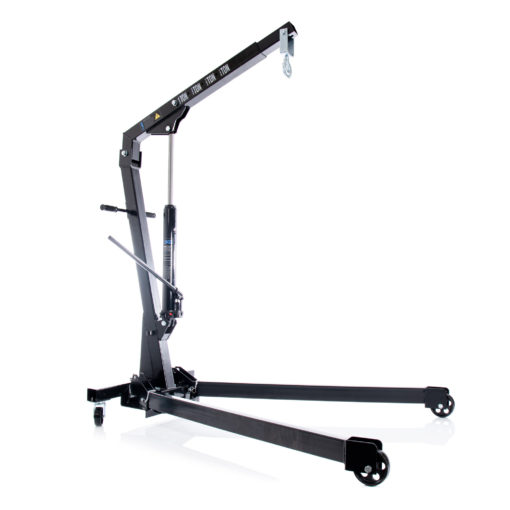
Fun Rover
November 13, 2021
Search
Popular Articles
8 Almost Useless Land Rover Mods
11th June 2014
Updated: What Makes a Defender Iconic?
29th November 2011
An engine crane, or hoist, lifts and lowers heavy items using a hydraulic cylinder filled with hydraulic fluid. The tool comes in various sizes, models and weightlifting capabilities. Typically, an engine hoist is used to extract and fit engines in the engine bay. They can be used to move the engine around a workshop too.

Engine cranes make heavy lifting much safer and easier. Engine hoists are used for larger vehicle repairs as they allow mechanics to remove the engine completely and access all angles and components of the engine without having to work in the small spaces of the engine bay.
You need to decide which engine crane is the most appropriate for your project. Operators should be trained on how to use an engine crane safely to ensure they aren’t injured and there is no damage to the engine, car or general workshop area. They should wear PPE, clear the workspace and take their time with the machine. The site manager should ensure all workers know how to use the hoist properly and regularly undergo and provide refresher training to keep all employees up to date on the best safety procedures for this hard-working piece of machinery. Mistakes could lead to injuries on site and damage to the project. You should also make sure each bolt and fixing on the engine crane is tight periodically.
Here are a few things to bear in mind when using an engine crane.
Lifting
Before you try to lift anything, the surrounding workspace should be clear from hazards and people. You need enough room to operate the engine crane and lift heavy items without worry about them landing on anyone or anything fragile - should something go wrong. Any fuel and air hoses, wiring and engine-mount fixing bolts, should be disconnect and removed. Identify the lifting points of the engine and position them carefully. Make sure the machine has the appropriate lifting capability before you begin to raise the boom by checking both the manufacturers manuals of the car and the crane. Connect the hoist mount (using appropriate rated shackles) to the engine and make sure all cables and bolts are tightened. The lifting load should be stable when you start to lift. If not, you'll need a load leveller.
Moving
Once you have lifted the engine or transmission, you need to move them to a safe place - like an engine stand or pallet. Try to minimise swinging. You must move slowly and with great care.
Engine cranes are not designed to hold heavy materials for long periods of time. As soon as you lift the engine fully out of the car, you need to lower it to its resting place. Do not leave an engine hanging on the hoist.
Do not, under any circumstances, go under the engine when you are lifting it. This could result in injury if the hydraulic ram were to fail.
Lowering
Once you have lifted and moved the engine, you can lower it to the ground, or fix it to a stand. Turn the hydraulic valve a small fraction and watch the engine lower gradually, always be ready to close the valve to stop movement. The mount or pallet which you are lowering the engine to should be strong enough to hold the load comfortably and serve as a strong surface for the necessary work to be carried out without fear of injury or sudden movement. Make sure the engine is stable on the ground before you begin to remove chains and bolts.
Be ready for things to go a little wrong, and always leave room for error.
You should operate an engine hoist with the utmost caution!
About Us
FunRover is a place for Land Rover enthusiasts to gather as a community and discuss the best 4x4 vehicles ever produced. We're building a library of high quality resources & articles to help owners along in their Land Rover ownership.
Popular Posts
8 Almost Useless Land Rover Mods
11th June 2014
Updated: What Makes a Defender Iconic?
29th November 2011
How to Plastidip your Land Rover Defender
19th August 2014





